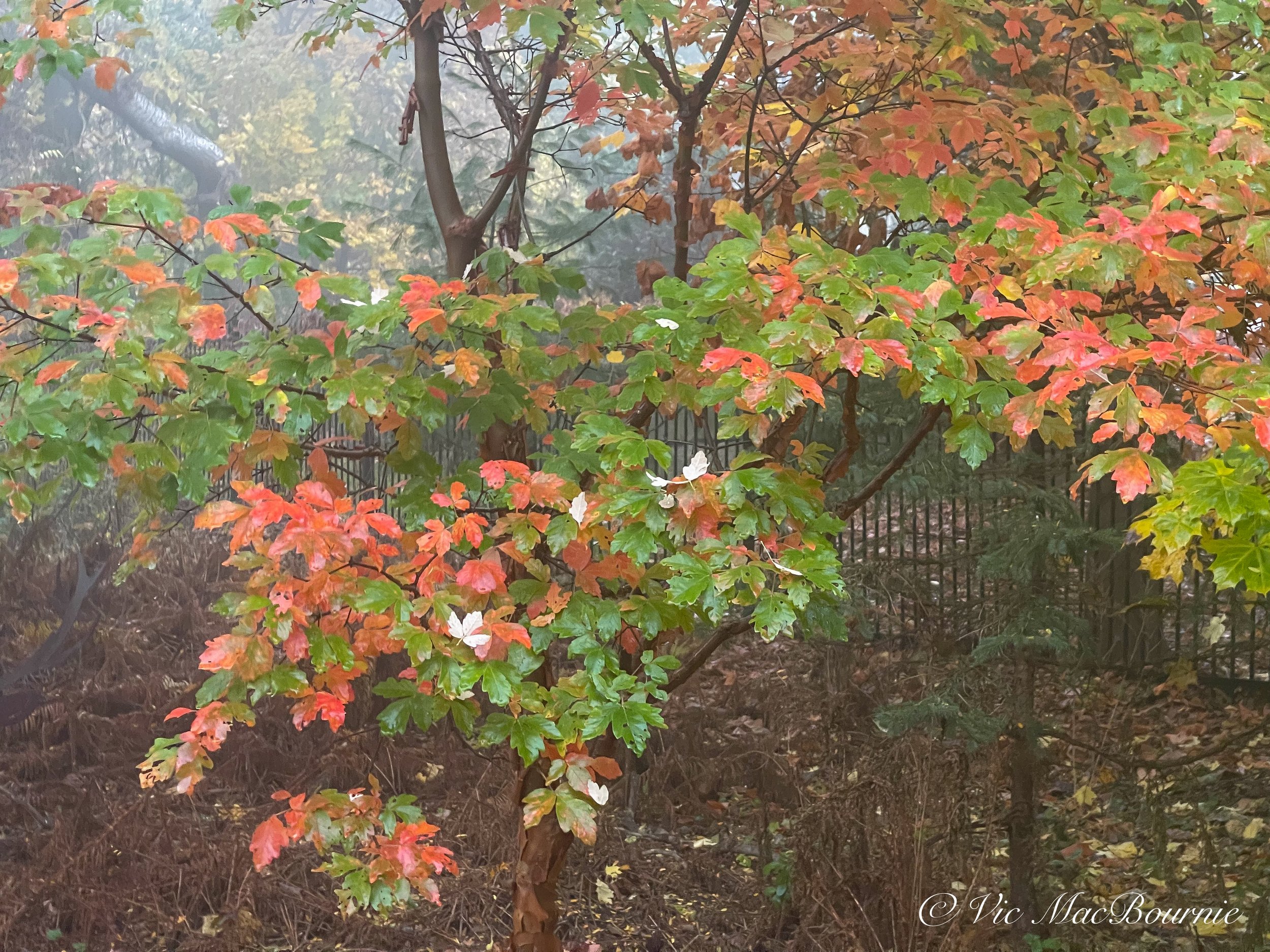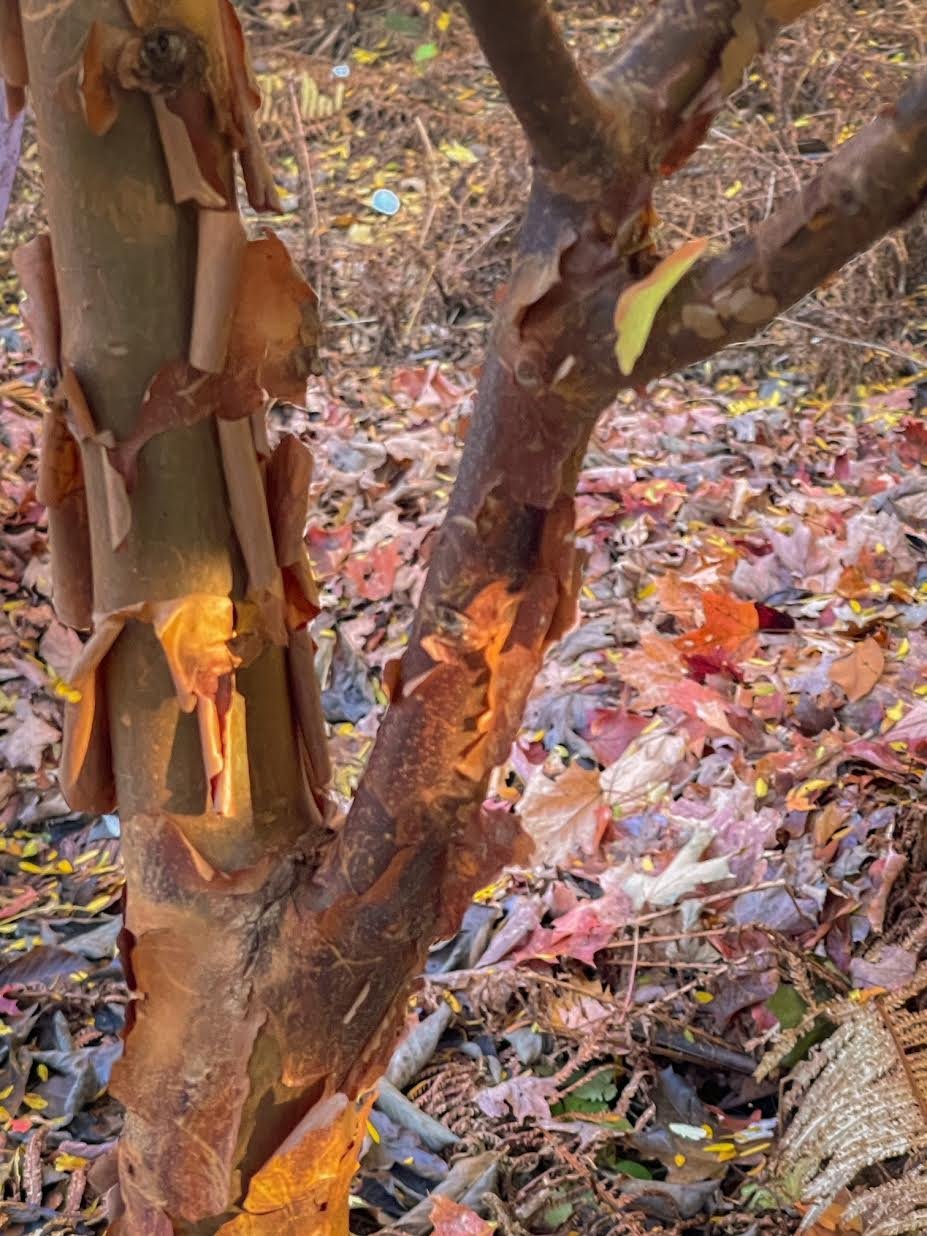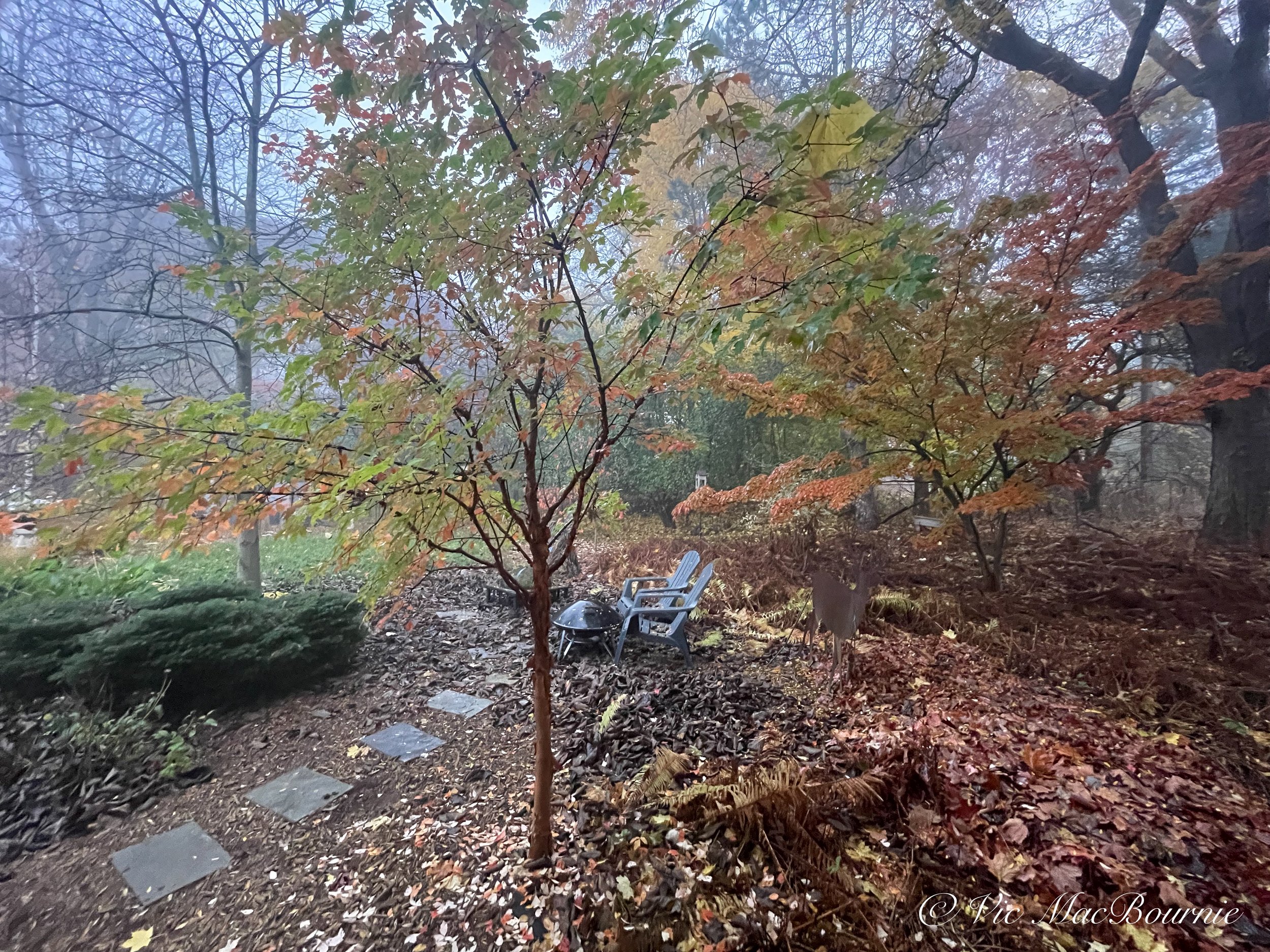Paperbark Maple: Understory tree with year-round interest
Paperbark Maple ideal for late fall colour in small urban yards
Paperbark Maples are as useful in the winter landscape with their exquisite, peeling cinnamon-coloured bark, as they are in summer when they perform as a beautiful, mid-size understory tree.
But don’t underestimate the Paperbark Maple’s outstanding performance in late fall when they light up the landscape long after most of the other deciduous trees are left naked.
Where to plant the Paperbark Maple for best results
Be sure to plant Paperbark Maple (acer griseum) in an area of your garden where you can appreciate it in every season.
Our Paperbark Maple is just steps away from our patio where we spend most of our time. It takes centre stage in late fall when its leaves just begin turning colour long after all the other deciduous trees have dropped their colourful leaves.
The Paperbark Maple is a lovely oval to rounded small tree with an open habit and upright branching. In fall, the dainty, three-lobed soft-green maple leaves turn a rich, rusty red.
How long does it take to reach maturity?
Acer griseum are a slow growing tree that will eventually reach about 25 ft. tall and between 15-20 ft. wide.
But unless you are buying a mature specimen, don’t expect the tree to reach those heights any time soon. Paperbark maples grow 6 to 12 inches a year depending on growing conditions.
Exfoliating papery bark is the show stopper year round
While the tree’s fall colour is often overlooked, the tree’s exfoliating papery sheets of bark that peel to reveal cinnamon-brown new bark is rarely overlooked in the landscape. It’s the bark, not unlike that of the river or white birch trees that makes acer griseum a special tree in a landscape.
How long before the bark on a paperbark maple begins to peel off?
If you have planted a young tree, don’t be surprised if you do not see any exfoliating bark for a few years. This can take up to seven years and is more evident on mature trees.
Do paperbark maples have pest problems?
Remarkably free of serious pest problems, the trees tolerate a wide range of conditions from sun to shade and wind.
They can also be attractive as a place to nest for birds, but are not known to be particularly effective in attracting either birds or other wildlife. The trees put out small yellow flowers in spring which can attract pollinators followed by two winged seeds about 1 cm long with a 3 cm wing, which can be a food source for backyard wildlife.
How to grow and use Paperbark Maples in the landscape
They like to grow in soil that is kept consistently moist, but not soggy, and are best grown in zones 5-8 in filtered sun, full sun or partial shade.
They are effective as an understory tree in a woodland or shade garden but because they like some sun, paperbark maples can be used as a specimen tree in a more open garden.
The compound leaves have a 2-4 cm petiole with three 3-10 cm long dark green leaflets.
What companion plants look good with Paperbark maples?
Good companion plants are various sedges, hostas and, of course a range of native spring wildflowers from trilliums, bloodroot and anemones, to bluebells. Keep the plants around the base of the tree on the shorter side so you can appreciate the full effect of the peeling bark.
These deciduous trees are at home in foundation beds in both front or back yards as an accent plant to greet visitors with its impressive bark. They can also work well in more wild, woodland settings, and in wetland conditions as transitions between the more formal garden and open spaces.
These trees are not native to North America. The Acer griseum originates from central China and was introduced to the U.K. in 1901. It came to North America a few years later. Cultivars include the columnar Copper Rocket.
What are good alternatives for the paperbark maple?
While the paperbark maple is an impressive, four-season tree that is at home in both the shade garden as an understory tree or as a specimen in a more sunny location, it may not be the best choice if you are looking for more native and wildlife-friendly trees in your landscape.
Other options to consider over the paperbark maples are, of course our native dogwoods ranging from the pagoda dogwood (cornus alternifolia), flowering dogwood (cornus florida), Redbud (cercis canadensis), Paw Paw (Asimina triloba) and the serviceberry (Amelanchier canadensis).
Our native serviceberry is an excellent choice maintaining similar growth habits, beautiful white flowers in spring followed by red berries in fall that are a favourite food source for birds and other wildlife. It’s fall colours (oranges and reds) are also similar to the paperbark maple.





